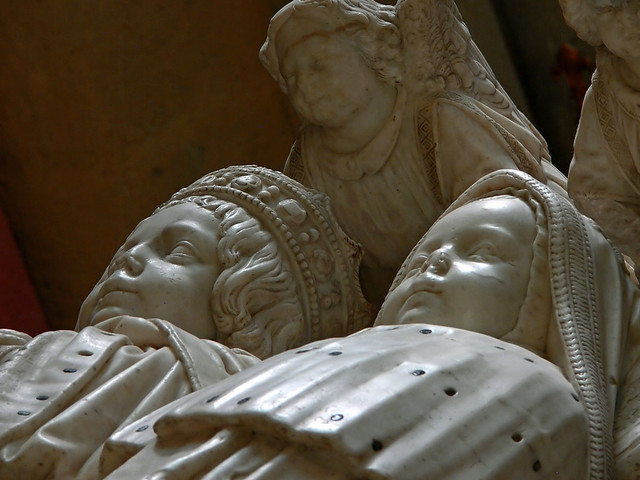Children and Monuments from the late medieval period to the 17th century.
Primary tabs
Monuments or memorials to children in English churches were extremely rare until the late 18th and early 19th century. In the 16th century one can find the occassional child tomb amongst the aristocracy, such as that of the "The Noble Impe" at St Mary's Warwick, but otherwise children do not appear to have warranted memorials in their own right.
However from the late 14th century brass monuments would ocassionally feature the children of the deceased as small representations, sometimes with names, at the feet of the deceased person. On tomb chests and wall memorials the children might also be represented as weepers along the chest sides, or below the monument. In most cases the depiction of children was formulaic with little regard for individuality, and their presence on the monument or brass was mainly to celebrate the families dynastic hopes. Where individuality was expressed it took the form of showing the child's station or occupation.
From the 16th and early 17th centuries, children that died in early infancy were sometimes represented in a chrisom shroud, and placed beside the mother particularly if she had died in childbirth.
In France one of the earliest tombs in the French Renaissance style is that of the children of Charles VIII of France and Anne of Brittany at Tours Cathedral (1506).
